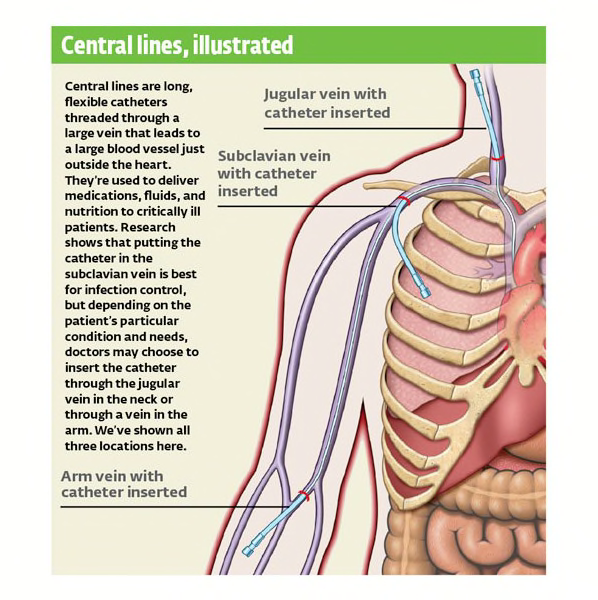| Hospital* |
City, State |
|---|
| University of Alabama Hospital |
Birmingham, AL |
| University of South Alabama Medical Center |
Mobile, AL |
| Arkansas Children's Hospital |
Little Rock, AR |
| UAMS Medical Center |
Little Rock, AR |
| Maricopa Integrated Health System |
Phoenix, AZ |
| TMC Healthcare |
Tucson, AZ |
| University Medical Center |
Tucson, AZ |
| George Washington University Hospital |
Washington, DC |
| Georgetown University Hospital |
Washington, DC |
| Howard University Hospital |
Washington, DC |
| Washington Hospital Center |
Washington, DC |
| All Children's Hospital |
Saint Petersburg, FL |
| Florida Hospital |
Orlando, FL |
| H. Lee Moffitt Cancer Center and Research Institute |
Tampa, FL |
| Jackson Health System |
Miami, FL |
| Mount Sinai Medical Center |
Miami Beach, FL |
| Shands at the University of Florida |
Gainesville, FL |
| Shands Jacksonville Medical Center |
Jacksonville, FL |
| Tampa General Hospital |
Tampa, FL |
| Children's Healthcare of Atlanta |
Atlanta, GA |
| Emory University Hospital |
Atlanta, GA |
| Emory University Hospital Midtown |
Atlanta, GA |
| Grady Memorial Hospital |
Atlanta, GA |
| Medical Center of Central Georgia |
Macon, GA |
| Medical College of Georgia Health |
Augusta, GA |
| Iowa Methodist Medical Center |
Des Moines, IA |
| University of Iowa Hospitals and Clinics |
Iowa City, IA |
| Ball Memorial Hospital |
Muncie, IN |
| Clarian Health Partners |
Indianapolis, IN |
| Wishard Health Services |
Indianapolis, IN |
| The University of Kansas Hospital |
Kansas City, KS |
| University of Kentucky Albert B. Chandler Hospital |
Lexington, KY |
| University of Louisville Hospital |
Louisville, KY |
| Medical Center of Louisiana at New Orleans |
New Orleans, LA |
| Ochsner Medical Center |
New Orleans, LA |
| Ochsner Medical Center - Kenner |
Kenner, LA |
| Our Lady of the Lake Regional Medical Center |
Baton Rouge, LA |
| Touro Infirmary |
New Orleans, LA |
| National Institutes of Health Clinical Center |
Bethesda, MD |
| Henry Ford Hospital |
Detroit, MI |
| Hurley Medical Center |
Flint, MI |
| Ingham Regional Medical Center |
Lansing, MI |
| McLaren Regional Medical Center |
Flint, MI |
| Oakwood Hospital & Medical Center-Dearborn |
Dearborn, MI |
| Abbott Northwestern Hospital |
Minneapolis, MN |
| Hennepin County Medical Center |
Minneapolis, MN |
| University of Minnesota Medical Center, Fairview |
Minneapolis, MN |
| Methodist Rehabilitation Center |
Jackson, MS |
| University Hospitals and Health System, University of Mississippi Medical Center |
Jackson, MS |
| Carolinas Medical Center |
Charlotte, NC |
| Duke University Hospital |
Durham, NC |
| Pitt County Memorial Hospital |
Greenville, NC |
| MeritCare Medical Center |
Fargo, ND |
| University of New Mexico Hospitals |
Albuquerque, NM |
| Hospital for Joint Diseases at NYU Lagone Medical Center |
New York, NY |
| Hospital for Special Surgery |
New York, NY |
| Children's Medical Center |
Dayton, OH |
| Cleveland Clinic Foundation |
Cleveland, OH |
| Good Samaritan Hospital |
Cincinnati, OH |
| Kettering Medical Center |
Kettering, OH |
| MetroHealth Medical Center |
Cleveland, OH |
| Northside Medical Center |
Youngstown, OH |
| St. Elizabeth Health Center |
Youngstown, OH |
| Summa Health System |
Akron, OH |
| The University of Toledo Medical Center |
Toledo, OH |
| University Hospital |
Cincinnati, OH |
| Albert Einstein Medical Center |
Philadelphia, PA |
| Crozer-Chester Medical Center |
Upland, PA |
| Fox Chase Cancer Center-American Oncologic Hospital |
Philadelphia, PA |
| Geisinger Medical Center |
Danville, PA |
| Hospital of the University of Pennsylvania |
Philadelphia, PA |
| Lankenau Hospital |
Wynnewood, PA |
| Magee-Womens Hospital of UPMC |
Pittsburgh, PA |
| Penn State Milton S. Hershey Medical Center |
Hershey, PA |
| St. Luke's Hospital - Bethlehem Campus |
Bethlehem, PA |
| Temple University Hospital |
Philadelphia, PA |
| Thomas Jefferson University Hospital |
Philadelphia, PA |
| UPMC Mercy |
Pittsburgh, PA |
| UPMC Presbyterian |
Pittsburgh, PA |
| Western Pennsylvania Hospital |
Pittsburgh, PA |
| York Hospital |
York, PA |
| Women & Infants Hospital of Rhode Island |
Providence, RI |
| Avera McKennan Hospital and University Health Center |
Sioux Falls, SD |
| Sanford University of South Dakota Medical Center |
Sioux Falls, SD |
| Children's Medical Center of Dallas |
Dallas, TX |
| Harris County Hospital District |
Houston, TX |
| JPS Health Network |
Fort Worth, TX |
| Medical Center Hospital |
Odessa, TX |
| Memorial Hermann - Texas Medical Center |
Houston, TX |
| Parkland Health & Hospital System |
Dallas, TX |
| Scott and White Memorial Hospital |
Temple, TX |
| St. Luke's Episcopal Hospital |
Houston, TX |
| University Health System |
San Antonio, TX |
| University Medical Center |
Lubbock, TX |
| University Medical Center of El Paso |
El Paso, TX |
| University of Texas M.D. Anderson Cancer Center |
Houston, TX |
| University of Texas Medical Branch Hospitals |
Galveston, TX |
| University of Utah Health Care - Hospital and Clinics |
Salt Lake City, UT |
| Aurora Sinai Medical Center |
Milwaukee, WI |
| Aurora St. Luke's Medical Center |
Milwaukee, WI |
| Froedtert Memorial Lutheran Hospital |
Milwaukee, WI |
| Gundersen Lutheran Medical Center |
La Crosse, WI |
| University of Wisconsin Hospital and Clinics |
Madison, WI |
| Charleston Area Medical Center |
Charleston, WV |
| West Virginia University Hospitals |
Morgantown, WV |
























